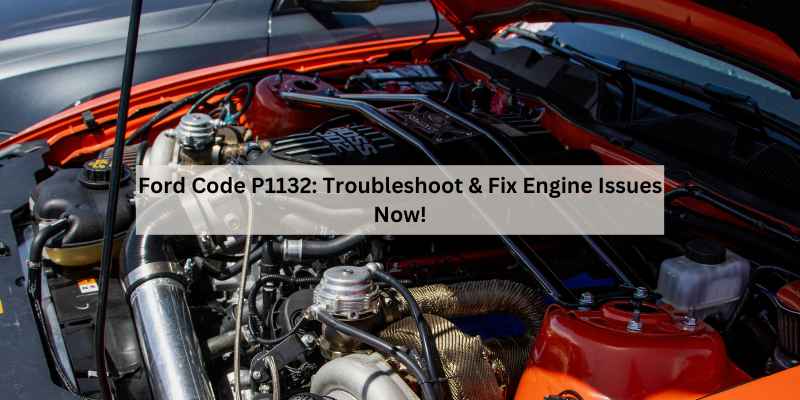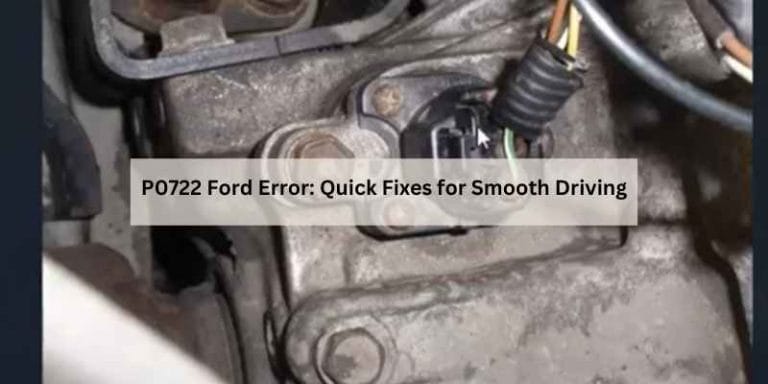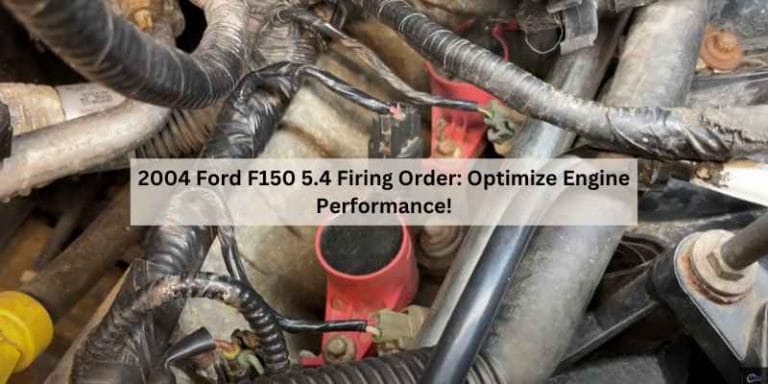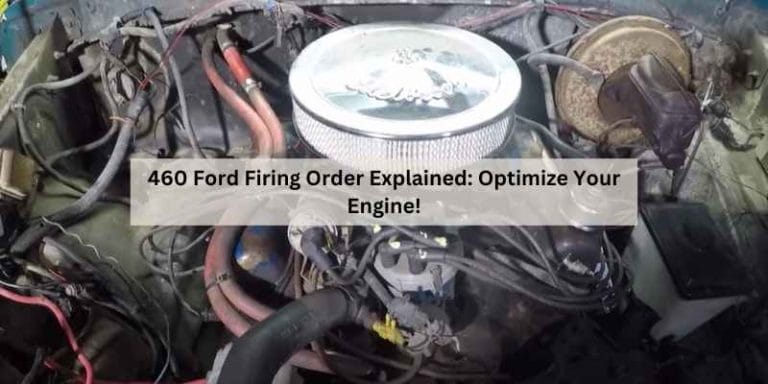Ford Code P1132: Troubleshoot & Fix Engine Issues Now!
Ford Code P1132 indicates a problem with the oxygen sensor, specifically insufficient switching. This usually stems from a faulty mass airflow sensor or fuel mixture issues.
Understanding Ford Code P1132 is crucial for maintaining your vehicle’s performance. This diagnostic trouble code (DTC) signals that the oxygen sensor on bank one is reading a rich condition, meaning there’s too much fuel in the air-fuel mixture. Drivers may notice decreased fuel efficiency, rough idling, or poor acceleration.
Identifying the root cause can help prevent further engine damage and costly repairs. Common culprits include a malfunctioning mass airflow sensor or issues with the fuel injectors. Proper diagnostics and repairs are essential for restoring your vehicle’s optimal performance and efficiency.
Introduction To Ford Code P1132
Ford Code P1132 is an important diagnostic trouble code. This code typically indicates a problem with the oxygen sensor. Specifically, it points to an issue with the passenger side oxygen sensor. A malfunctioning sensor can lead to incorrect readings. These readings can affect the vehicle’s performance.
Common symptoms of Code P1132 include:
- Check Engine Light illuminated
- Rough idle or stalling
- Poor fuel economy
- Increased emissions
Understanding these signs is crucial for vehicle maintenance. Addressing issues early can prevent further damage.
Primary Causes Behind Code P1132
The primary causes behind Ford Code P1132 often include a faulty oxygen sensor. This sensor measures the amount of oxygen in the exhaust. If it fails, it can send incorrect data to the engine control unit (ECU). This leads to poor fuel management and increased emissions.
Another common issue is related to mass airflow sensor problems. This sensor monitors the amount of air entering the engine. If it is bad or contaminated, it can overestimate the airflow. This skews the oxygen sensor readings, causing the P1132 code to appear. Both components play a crucial role in maintaining the engine’s performance.
Diagnosing The Issue
To diagnose the Ford Code P1132, specific tools are essential. Gather a digital multimeter for electrical measurements. An OBD-II scanner helps read error codes. A mechanical gauge can check fuel pressure effectively. Use a vacuum gauge to assess intake leaks.
Follow these steps for an accurate diagnosis. Start by checking the mass airflow sensor. Ensure it’s clean and functioning properly. Next, inspect the oxygen sensors for damage or contamination. A faulty sensor can cause inaccurate readings.
Examine the fuel injectors as well. Stuck injectors can lead to a rich fuel mixture. Lastly, assess the intake system for leaks. Any leaks can skew sensor readings and trigger the code.
Addressing Oxygen Sensor Problems
Identifying a faulty oxygen sensor is crucial for maintaining your Ford vehicle. Symptoms often include poor fuel economy, rough idling, and increased emissions. A malfunctioning sensor can cause the engine to run rich or lean.
Start by checking the Check Engine Light. Use an OBD-II scanner to read the codes. P1132 indicates a problem with the oxygen sensor on bank one. Inspect the wiring and connectors for any damage or corrosion.
Replace the sensor if it shows signs of failure. Use the following steps for a successful replacement:
| Step | Description |
|---|---|
| 1 | Disconnect the battery. |
| 2 | Locate the oxygen sensor. |
| 3 | Unplug the sensor connector. |
| 4 | Remove the old sensor. |
| 5 | Install the new sensor. |
| 6 | Reconnect the battery. |
Fixing Mass Airflow Sensor Contamination
Mass airflow sensors can get contaminated easily. Regular cleaning helps maintain their efficiency. Use a specific cleaner designed for sensors. Avoid using harsh chemicals that can damage the sensor. Spray the cleaner directly onto the sensor and let it dry completely.
Check the sensor regularly for debris or dirt buildup. If cleaning does not solve the issue, consider replacement. Signs that it’s time to replace include persistent error codes and poor engine performance. A new sensor can restore proper functionality and improve fuel efficiency.
| Signs to Replace | Description |
|---|---|
| Persistent Error Codes | Codes continue even after cleaning. |
| Poor Engine Performance | Noticeable drop in power or efficiency. |
| Fuel Efficiency Issues | Increased fuel consumption without reason. |
Additional Troubleshooting Tips
Troubleshooting Ford Code P1132 requires careful inspection of the mass airflow sensor and oxygen sensors. Common issues include a faulty or contaminated mass airflow sensor, leading to inaccurate readings. Regular maintenance and timely checks can prevent further complications related to this code.
Inspecting Fuel Injectors
Fuel injectors play a crucial role in engine performance. Inspect them for any signs of clogs or leaks. Use a multimeter to check their resistance. Replace any that are faulty to ensure proper fuel delivery.
Checking For Vacuum Leaks
Vacuum leaks can cause engine performance issues. Check all hoses and connections for cracks or looseness. A simple way to locate leaks is using soapy water. Apply it to suspected areas and look for bubbles. Fix any leaks found to enhance engine efficiency.
Preventative Measures
Regular maintenance is essential for optimal vehicle performance. Inspecting the mass airflow sensor regularly helps prevent issues. Clean the sensor to remove dirt and debris. This ensures accurate readings of air entering the engine.
Check the oxygen sensors frequently. A faulty sensor can lead to poor fuel efficiency and increased emissions. Replace worn-out sensors promptly to avoid further damage.
Keep the engine air filter clean. A dirty filter restricts airflow, affecting engine performance. Change the filter as recommended in the owner’s manual.
Lastly, monitor your vehicle’s fuel system. Ensure there are no leaks or blockages. Regular checks can save you from costly repairs later.
Frequently Asked Questions
What Does Engine Code P1132 Mean?
Engine code P1132 indicates a problem with the oxygen sensor on bank one. It often signals a rich fuel mixture or issues with the mass airflow sensor. This code suggests that the vehicle may run inefficiently and requires diagnosis and repair.
What Does Ford Code P1132 Mean?
Ford Code P1132 indicates a problem with the oxygen sensor’s performance, particularly on bank one. It suggests that the engine is running too rich, meaning there’s an excess of fuel in the combustion chamber. This code often signals issues with the mass airflow sensor or fuel injectors.
How To Fix Ford Code P1132?
To fix Ford Code P1132, start by checking the mass airflow sensor for contamination or damage. Cleaning or replacing it may resolve the issue. Additionally, inspect the oxygen sensor and fuel injectors for proper operation. Reset the code and test drive the vehicle to confirm the fix.
What Causes Ford Code P1132?
Ford Code P1132 is often caused by a malfunctioning mass airflow sensor or a faulty oxygen sensor. It can also arise from fuel system issues, such as a stuck fuel injector. These problems can lead to inaccurate air-fuel mixture readings, triggering the code.
Conclusion
Understanding Ford Code P1132 is essential for maintaining your vehicle’s performance. This code often signals issues with the mass airflow sensor or oxygen sensor. Addressing these problems promptly can prevent further damage. Regular diagnostics and maintenance ensure your Ford runs smoothly and efficiently.
Stay informed to keep your vehicle in top shape.







